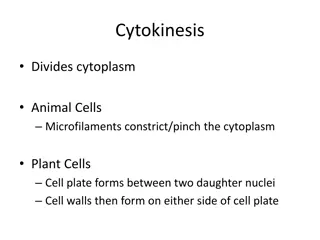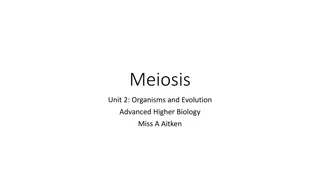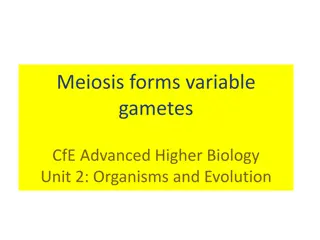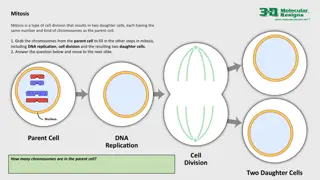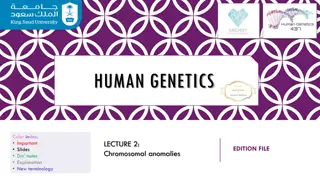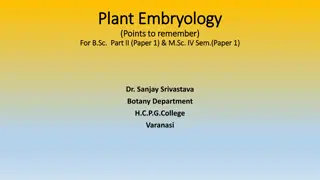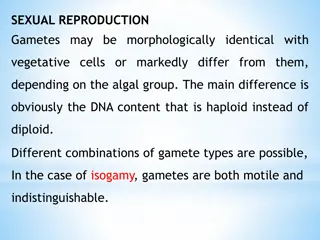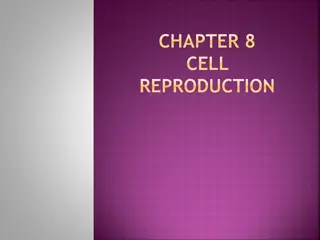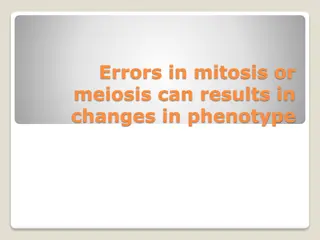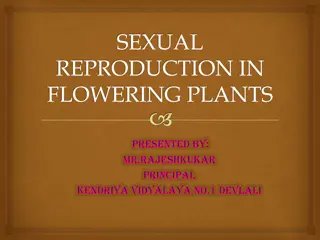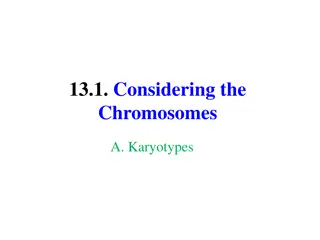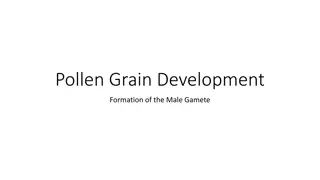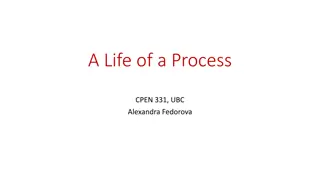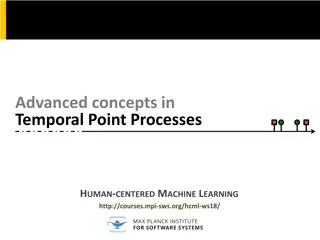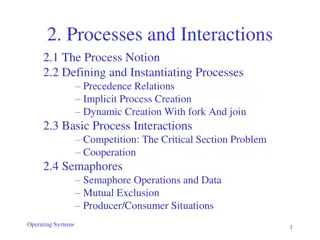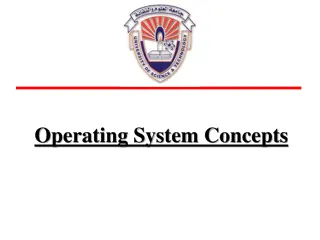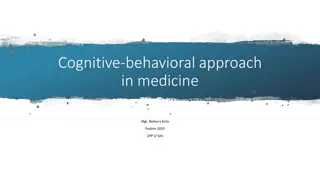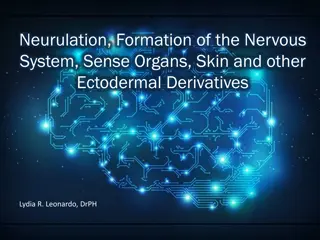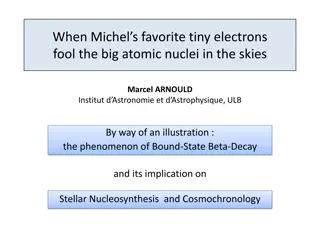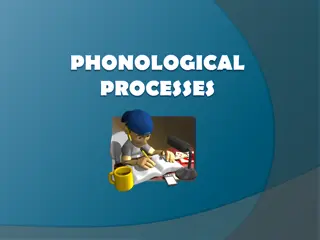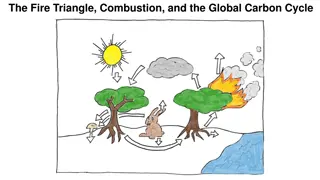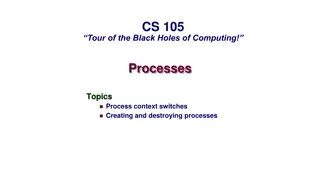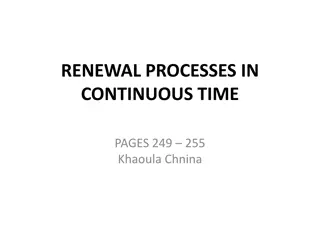Understanding Meiosis: The Key Processes and Concepts
Meiosis is a crucial process in genetics where the number of chromosomes is halved through two divisions, resulting in the formation of haploid cells from diploid cells. This process involves key concepts such as homologous chromosomes, crossing over, alleles, and the distinction between diploid and haploid cells. By understanding the phases of meiosis, including prophase I and the significance of crossing over, one can grasp the essential mechanisms underlying sexual reproduction in organisms.
Download Presentation

Please find below an Image/Link to download the presentation.
The content on the website is provided AS IS for your information and personal use only. It may not be sold, licensed, or shared on other websites without obtaining consent from the author. Download presentation by click this link. If you encounter any issues during the download, it is possible that the publisher has removed the file from their server.
E N D
Presentation Transcript
Key Vocab Diploid Haploid Chromosome Chromatid Chromatin Crossing Over Tetrad Gene A segment of genetic information on a chromosome. Codes for a specific characteristic Allele A specific form of a gene
Meiosis Diploid cells contain 2 sets of chromosomes Chromosomes strands of DNA and protein inside the cell nucleus are the carriers of genes. The genes are located in specific positions on chromosomes.
Diploid Cells A body cell in an adult fruit fly has eight chromosomes, as shown in the figure. Four of the chromosomes come from its male parent, and four come from its female parent. These two sets of chromosomes are homologous, meaning that each of the four chromosomes from the male parent has a corresponding chromosome from the female parent.
Diploid Cells A cell that contains both sets of homologous chromosomes is diploid, meaning two sets. The diploid number of chromosomes is sometimes represented by the symbol 2N. For the fruit fly, the diploid number is 8, which can be written as 2N = 8, where N represents twice the number of chromosomes in a sperm or egg cell.
Haploid Cells Some cells contain only a single set of chromosomes, and therefore a single set of genes. Such cells are haploid, meaning one set. The gametes (sex cell) of sexually reproducing organisms are haploid. What is the haploid number for humans?
Meiosis Meiosis is a process in which the number of chromosomes per cell is cut in half through the separation of homologous chromosomes in a diploid cell. Meiosis usually involves two distinct divisions, called meiosis I and meiosis II. By the end of meiosis II, the diploid cell becomes four haploid cells.
Phases of Meiosis I & Prophase I Each replicated chromosome pairs with its corresponding chromosome (called a tetrad contains 4 chromatids). Then, the crossed sections of the chromatids are exchanged. Crossing-over is important because it produces new combinations of alleles in the cell.
Metaphase I & Anaphase I As prophase I ends, a spindle forms and attaches to each tetrad. During metaphase I of meiosis, paired homologous chromosomes line up across the center of the cell.
Metaphase I & Anaphase I During anaphase I, spindle fibers pull each homologous chromosome pair toward opposite ends of the cell. When anaphase I is complete, the separated chromosomes cluster at opposite ends of the cell.
Telophase & Cytokinesis During telophase I, a nuclear membrane forms around each cluster of chromosomes. Cytokinesis follows telophase I, forming two new cells.
Meiosis I Meiosis I results in two daughter cells, each of which has four chromatids (same as mitosis). Because each pair of homologous chromosomes was separated, neither daughter cell has the two complete sets of chromosomes that it would have in a diploid cell. The two cells produced by meiosis I have sets of chromosomes and alleles that are different from each other and from the diploid cell that entered meiosis I.
Meiosis II The two cells produced by meiosis I now enter a second meiotic division. Unlike the first division, neither cell goes through a round of chromosome replication before entering meiosis II.
Prophase II As the cells enter prophase II, their chromosomes each consisting of two chromatids become visible. The chromosomes do not pair to form tetrads, - the homologous pairs were already separated during meiosis I.
Metaphase II During metaphase of meiosis II, chromosomes line up in the center of each cell.
Anaphase II As the cell enters anaphase, the paired chromatids separate.
Telophase II & Cytokinesis In the example shown here, each of the four daughter cells produced in meiosis II receives two chromatids These four daughter cells now contain the haploid number (N) just two chromosomes each.
Gametes to Zygotes The haploid cells produced by meiosis II are gametes. In male animals, these gametes = sperm. Pollen grains contain haploid sperm cells. In female animals, generally only one of the cells produced by meiosis is involved in reproduction. The female gamete is called an egg in animals and an egg cell in some plants.
Gametes to Zygotes Fertilization the fusion of male and female gametes generates new combinations of alleles in a zygote. The zygote undergoes cell division by mitosis and eventually forms a new organism.
Comparing Mitosis & Meiosis In mitosis each daughter cell receives one complete set of chromosomes. In meiosis, homologous chromosomes line up and then move to separate daughter cells. In Mitosis no change chromosome number. In Meiosis - reduces the chromosome number by half.
Comparing Mitosis & Meiosis Mitosis - production of two genetically identical diploid cells Meiosis produces four genetically different haploid cells. Mitosis is a form of asexual reproduction Meiosis is an early step in sexual reproduction.


